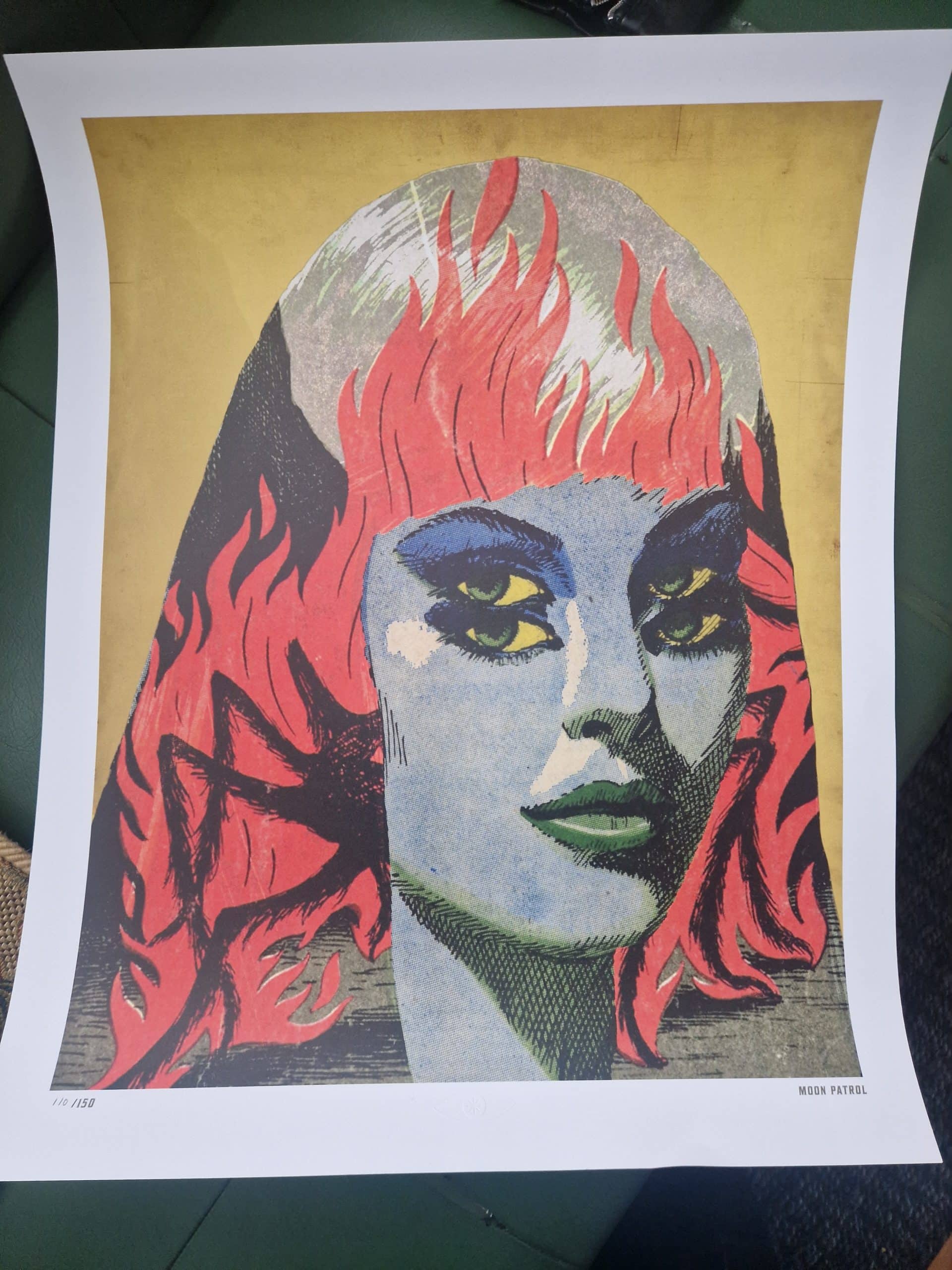The enigmatic street artist Banksy has been particularly active over the past couple of weeks, with new installations appearing every few days at various locations around London. As most people know by now, his work is not of the conventional kind that keeps framing shops busy, but is stencilled directly onto the surfaces of buildings or other objects.
The new animal-themed artworks have so far included silhouettes of a mountain goat teetering on a narrow structure with rockfall beneath its feet; a pair of elephants with their trunks reaching towards each other; a trio of monkeys swinging across the side of a bridge; and a stretching black cat.
Images that have appeared around the capital in recent days include a wolf, pelicans, piranhas, a rhinoceros, and a gorilla with seals and birds on a white shutter at London Zoo. The latest work was claimed by the artist on his Instagram account.
Rebecca Blanchard, media manager at the Zoological Society of London (ZSL), told the PA news agency: “This was an incredible surprise and we are, quite frankly, thrilled that he’s chosen us to be what could be the grand finale of this series that’s been so talked about.”
She added: “We know that animals, wildlife, they bring joy to people. They improve people’s mental health, physical health, your general wellbeing is improved by being around nature and wildlife, and Banksy’s done that around London, and he’s then gone, ‘hey, I know who else does that’. That’s my interpretation.”
Is there a deeper meaning to the animal artworks?
As always, the string of images have generated much debate as to their deeper meanings. Banksy is well known for his images that often have a sociopolitical or environmental theme.
According to DesignBoom, online speculation has ranged from the philosophical to the political, with comments including:
“The city is a zoo of human society. We’ve lost our connection to the natural world, choosing instead to engage with controlled experiences—through cameras, phones, and domesticated pets. Are humans truly the higher form?’
Another amateur art critic noted: ‘All the images are of animals, which hints at George Orwell’s Animal Farm, where the animals symbolise the people’s rebellion against the government.’
These interpretations are perhaps valid and understandable, considering Banksy’s previous works, which have made clear commentary on issues ranging from asylum seekers to international conflict and the environment.
However, according to the artist’s support organisation, Pest Control Office, the images have simply been intended to cheer up the public in the face of the never ending cycle of grim and negative news stories.
It seems that this time, Banksy simply wants to inject some feelgood factor into the summer with fun and gentle reminders of a world that has nothing to do with the relentless and often destructive march of human progress.
Artwork or criminal damage?
However, not everyone takes such a benevolent view of Banksy’s artwork. He began his career as a graffiti artist in Bristol, where he developed his trademark stencilling style and habit of working under the cover of anonymity and darkness to avoid being arrested for criminal damage.
Today, it is Banksy’s artwork itself that is more likely to be subject of criminal damage. Indeed, some of his recent animal images have already been defaced, stolen, or removed. The stretching black cat stencil on an empty billboard in Cricklewood was taken down by contractors just hours after it appeared.
The contractors said that the billboard was removed ahead of schedule to protect public safety, and that the artwork would be stored until it was claimed.
Meanwhile, the image of a howling wolf on a satellite dish in Peckham appeared to have been stolen within a few hours of Banksy claiming the work as his own, and the elephant and the rhino have been defaced with spray paint. Street artists accept that their works are rarely permanent, and such incidents are often a hazard of the job.
However, the installations themselves raise the question of where the line is drawn between art and criminal damage. For example, the swimming piranhas that have been painted onto the side of a City of London Police sentry box has been described as “criminal damage” by the police, and the box has now been barricaded off.
The sentry boxes were installed in the 1990s to monitor traffic in the wake of the IRA attacks. However, it is unlikely that Banksy will face any charges, and a police spokesperson commented that steps would be taken to preserve the artwork for the public.
Artist Daniel Lloyd-Morgan, who paints images of Banksy’s works, told BBC News: “It’s really uplifting for people in London at the moment. There’s a buzz around his work.”
He added: “It’s nice to capture that as I do the people as well. It’s not just about the artwork, it’s about the whole environment he’s creating, it becomes a sort of work of art itself – what happens to it, people steal it or take it away.”
Meanwhile, a passerby who was taking photographs commented that the piranhas were “rather beautiful in the sun.” She added: “I like it, it’s got a charm to it somehow. It’s not in your face, it’s quite subtle.”
So just who is Banksy?
To some, Banksy is no more than a common graffitist and vandal of the public realm, while to others he has hero status. Unusually in our information saturated age, he has managed to remain largely anonymous whilst achieving worldwide fame. His works sell for millions of pounds at auction, but it is believed that much of his profits are donated to charitable causes.
It is known that the artist began his career in Bristol, although his exact identity is unknown. He has been linked to the hip hop artist Robert Del Naja, former public school boy Robin Gunningham, and an art collective based in Bristol.
